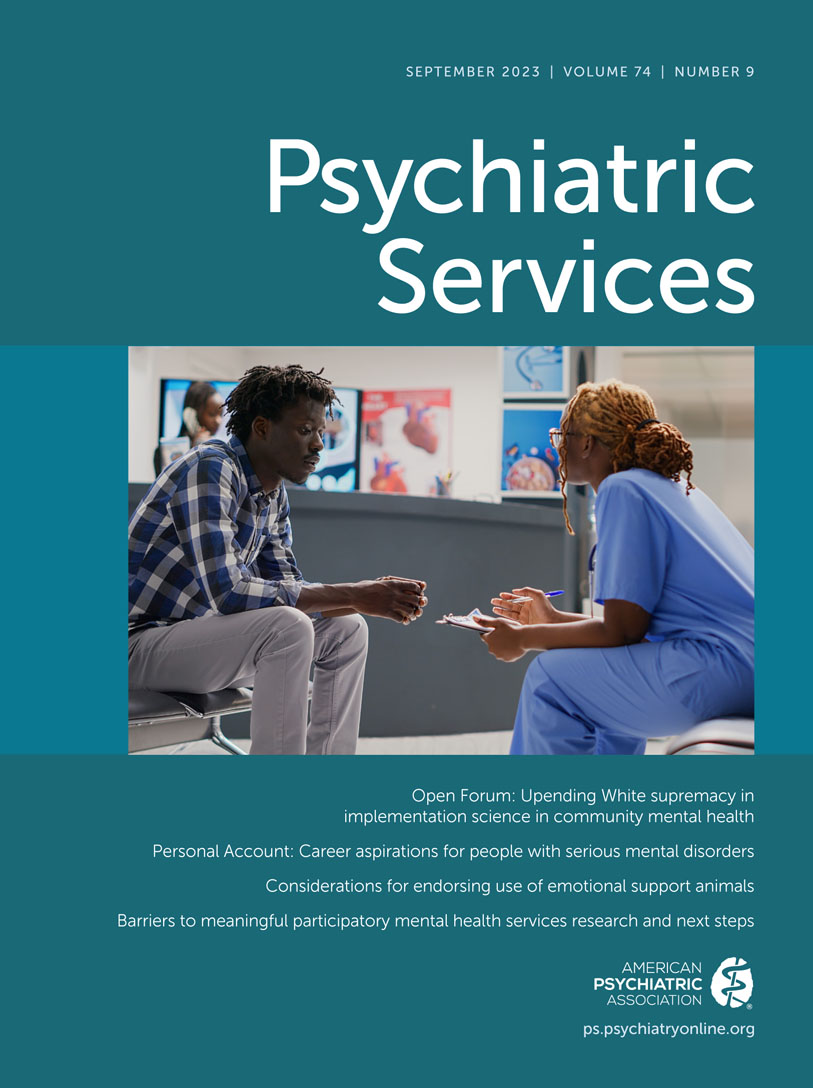A Machine-Learning Approach to Assess Factors Associated With Hospitalization of Children and Youths in Psychiatric Crisis
Abstract
Objective:
The authors used a machine-learning approach to model clinician decision making regarding psychiatric hospitalization of children and youths in crisis and to identify factors associated with the decision to hospitalize.
Methods:
Data consisted of 4,786 mobile crisis response team assessments of children and youths, ages 4.0–19.5 years (mean±SD=14.0±2.7 years, 56% female), in Nevada. The sample assessments were split into training and testing data sets. A random-forest machine-learning algorithm was used to identify variables related to the decision to hospitalize a child or youth after the crisis assessment. Results from the training sample were externally validated in the testing sample.
Results:
The random-forest model had good performance (area under the curve training sample=0.91, testing sample=0.92). Variables found to be important in the decision to hospitalize a child or youth were acute suicidality, followed by poor judgment or decision making, danger to others, impulsivity, runaway behavior, other risky behaviors, nonsuicidal self-injury, psychotic or depressive symptoms, sleep problems, oppositional behavior, poor functioning at home or with peers, depressive or schizophrenia spectrum disorders, and age.
Conclusions:
In crisis settings, clinicians were found to mostly focus on acute factors that increased risk for danger to self or others (e.g., suicidality, poor judgment), current psychiatric symptoms (e.g., psychotic symptoms), and functioning (e.g., poor home functioning, problems with peer relationships) when deciding whether to hospitalize or stabilize a child or youth. To reduce psychiatric hospitalization, community-based services should target interventions to address these important factors associated with the need for a higher level of care among youths in psychiatric crisis.
Access content
To read the fulltext, please use one of the options below to sign in or purchase access.- Personal login
- Institutional Login
- Sign in via OpenAthens
- Register for access
-
Please login/register if you wish to pair your device and check access availability.
Not a subscriber?
PsychiatryOnline subscription options offer access to the DSM-5 library, books, journals, CME, and patient resources. This all-in-one virtual library provides psychiatrists and mental health professionals with key resources for diagnosis, treatment, research, and professional development.
Need more help? PsychiatryOnline Customer Service may be reached by emailing [email protected] or by calling 800-368-5777 (in the U.S.) or 703-907-7322 (outside the U.S.).



